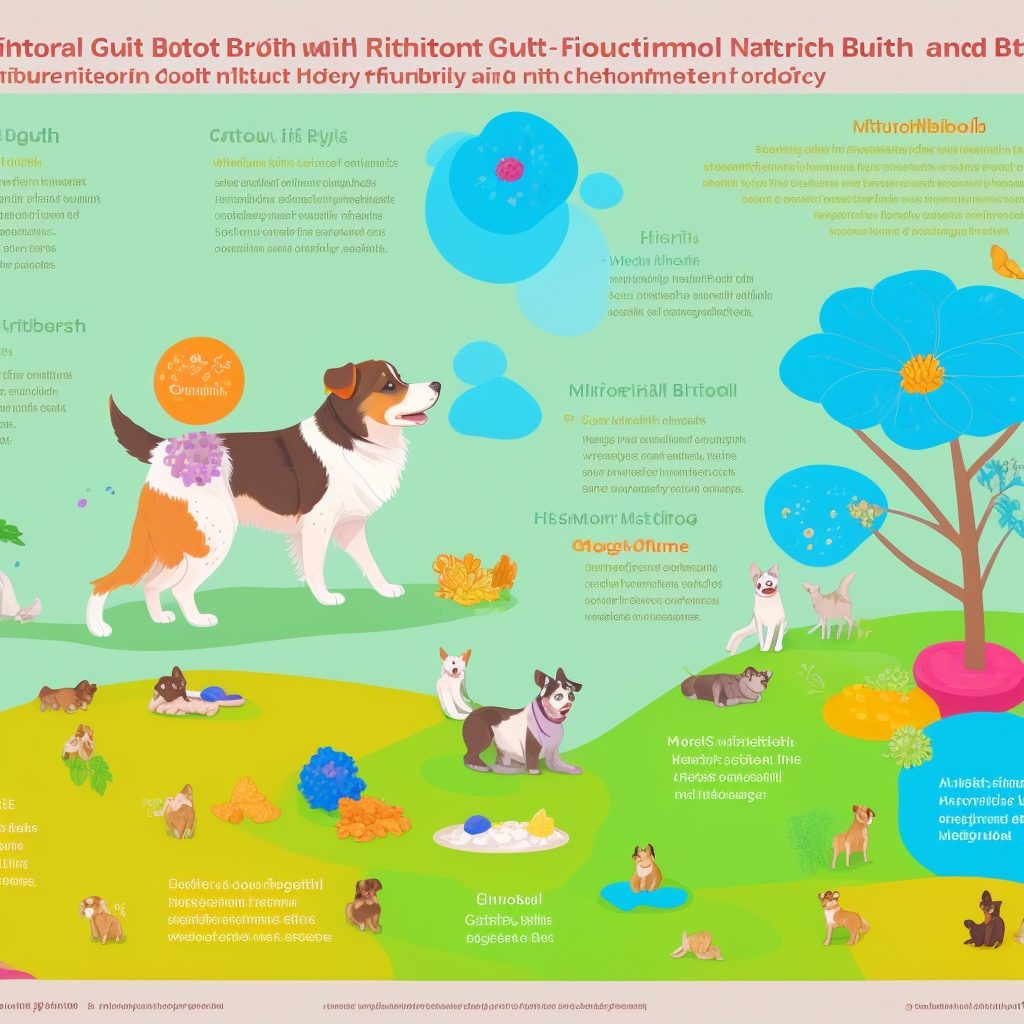When Is It Time to Combine Multiple Natural Therapies for a Dog’s Persistent Allergies?
Hey there! If you’re diving into this guide, chances are you’re scratching your head over your furry friend’s allergies—or, let’s be honest, maybe they’re doing all the scratching. Either way, I’ve been in your shoes, and that’s why this guide exists. It’s not just another list of remedies. Nope, it’s a heartfelt roadmap for when it’s time to blend those natural therapies to give your pup the relief they deserve.
So, what makes this guide different? Well, it’s personal. I remember when I first started out, the world of natural dog remedies seemed vast and, frankly, a bit overwhelming. But over the years, I’ve seen the magic that happens when you combine the right therapies. It’s like watching a puzzle come together, piece by synergistic piece. The beauty lies in understanding that each dog’s immune system is as unique as their personality—what works for a spirited Border Collie might need tweaking for a gentle Golden Retriever. So, let’s dive in and explore this journey together, armed with both compassion and scientific understanding.
Understanding the Basics of Dog Allergies: What’s Really Going On?
Before we start mixing and matching remedies, it’s important to get a good grasp on what’s happening with your dog. Allergies in dogs manifest in various ways—itchy skin, sneezing, ear infections, and even digestive issues. But here’s what’s fascinating: most of these reactions are due to an overactive immune response to everyday substances like pollen, dust, or certain foods. It’s their body just overreacting to something harmless!
In the United States, canine allergies are surprisingly common, affecting about 10% of the dog population according to 2024 statistics, with environmental allergies showing a notable increase in urban areas due to pollution and climate change factors. Recent veterinary research from 2024 has also identified that certain breeds—including German Shepherds, Bulldogs, and Retrievers—show genetic predispositions to developing multiple allergies simultaneously, making combination therapy approaches particularly relevant for these breeds.
So, if you feel alone in this, you’re definitely not. Here’s the thing though: when is it really time to consider combining therapies? Well, if you’ve diligently tried a single remedy and your pup’s still scratching away, or if those frustrating allergies keep coming back the moment you stop, it’s a strong signal it might be time to mix things up a bit. Additionally, if you notice seasonal patterns where symptoms worsen during specific times of year, or if your dog experiences what veterinarians call “allergy cascading”—where one symptom triggers another—combination approaches become even more valuable.
Exploring Single Natural Therapies: When They Shine (and When They Don’t)
Let’s start with what you probably already know. Single natural therapies can be quite effective for mild cases or specific symptoms. For instance, omega-3 supplements are incredibly popular for reducing inflammation, particularly EPA and DHA from marine sources which have shown remarkable anti-inflammatory properties in recent clinical studies. I recall one client whose Labrador, a lively golden retriever named Buster, suffered from persistent, angry hot spots; incorporating a high-quality fish oil supplement into his diet made a truly noticeable difference, calming his skin within weeks.
Quercetin, often called “nature’s Benadryl,” works beautifully as a standalone therapy for dogs with mild seasonal allergies. This powerful bioflavonoid acts as a natural antihistamine and has gained significant attention in veterinary circles since 2023 research confirmed its mast cell stabilizing properties. Similarly, coconut oil applied topically can provide immediate relief for localized skin irritation, while raw, unfiltered apple cider vinegar (properly diluted, of course) can help restore skin pH balance.
But here’s the kicker: these aren’t miracle workers for every situation, especially chronic, multi-faceted allergies. Single therapies often address symptoms rather than root causes, which is why many pet parents find themselves in a frustrating cycle of temporary relief followed by symptom return. This is particularly true for dogs dealing with what veterinarians term “allergy syndrome”—where multiple body systems are affected simultaneously.
If you’re interested in avoiding mistakes with canine allergy herbs, you might want to check out this 2025 Expert Guide: Avoid Mistakes with Canine Allergy Herbs. It’s packed with practical advice that can save you both time and your dog’s discomfort.
When One Isn’t Enough: The Powerful Case for Combination Therapies
Sometimes, despite our best efforts and the best intentions, a single therapy just doesn’t cut it. This is precisely where the magic of combination comes into play. Combining therapies allows us to target multiple aspects of allergies simultaneously—addressing inflammation, supporting immune function, healing damaged tissue, and preventing future flare-ups all at once.
For example, pairing a hypoallergenic diet with probiotic supplements can powerfully support gut health, which, as we know, is often intricately linked to immune responses. Recent microbiome research from 2024 has revealed that dogs with allergies often have significantly altered gut bacteria profiles, with reduced beneficial strains like Lactobacillus and Bifidobacterium. When you combine targeted probiotics with prebiotic-rich foods like pumpkin or sweet potato, you’re essentially rebuilding your dog’s internal ecosystem from the ground up.
If you want to dive deeper into boosting your dog’s gut health, here’s a Proven 2025 Allergy Relief: Boost Dog Gut Health guide that might really interest you.
Combining therapies isn’t just about doubling up; it’s about achieving synergy. Imagine using herbal remedies like soothing chamomile or healing calendula alongside a carefully balanced diet. The herbs work on reducing inflammation and calming irritation, while the diet minimizes allergen exposure. Add in regular detox baths with colloidal oatmeal and Epsom salts, and you’re creating a comprehensive healing environment that addresses allergies from multiple angles.
Consider this powerful combination I’ve seen work wonders: nettle leaf (natural antihistamine) + turmeric with black pepper (anti-inflammatory) + bone broth (gut healing) + weekly oatmeal baths (skin soothing). Each element supports the others, creating a therapeutic effect that’s greater than the sum of its parts. It’s far more nuanced than it appears and, I’ll admit, sometimes surprisingly tricky to get right without a holistic perspective.
Advanced Insights and Pro Tips from the Field
Ready to take things up a notch and really get strategic? Let’s talk about some advanced strategies I’ve seen work wonders. One incredibly clever technique is rotational diets. By varying your dog’s protein sources and diet every few months, you can actually prevent new allergies from developing and give their immune system a break. I vividly remember a client whose Poodle developed a frustrating allergy to chicken, but by rotating proteins like duck, lamb, and even novel proteins like venison or rabbit, they finally found lasting relief.
The concept of “immune tolerance” is crucial here. When dogs eat the same proteins repeatedly, their immune system can become hypersensitive to those specific proteins. Rotation prevents this sensitization while providing nutritional variety. A typical rotation might look like: 8 weeks of duck-based meals, followed by 8 weeks of lamb, then 8 weeks of fish, before cycling back. This approach has gained significant traction among holistic veterinarians since 2024 studies confirmed its effectiveness in preventing food sensitivities.
Also, don’t underestimate the power of environmental changes. Simple, often overlooked tweaks in your home, like using high-efficiency HEPA filters or switching to natural, non-toxic cleaning products, can make a surprisingly big difference in reducing allergen load. Recent indoor air quality studies have shown that homes with dogs benefit enormously from air purifiers specifically designed to capture pet dander and pollen particles smaller than 0.3 microns.
And here’s a personal favorite: local honey. It’s a natural, delicious way to help desensitize your dog to local pollen, almost like a sweet, daily vaccine. The theory behind this—similar to human allergy immunotherapy—is that small, regular exposures to local pollens through honey can gradually build tolerance. Start with just a quarter teaspoon for small dogs, half teaspoon for medium dogs, and a full teaspoon for large breeds, mixed into their food daily during allergy season.
Another advanced strategy involves timing your interventions with your dog’s natural circadian rhythms. Cortisol levels naturally fluctuate throughout the day, and administering certain supplements like adaptogenic herbs (ashwagandha, rhodiola) in the morning can help support healthy stress responses that directly impact allergy severity.
If you’re keen on exploring more about allergy diagnosis, which is truly foundational for effective treatment, check out the Essential Allergy Diagnosis for Dogs’ Natural Care 2025.
Creating Your Personalized Combination Protocol
Now that we’ve covered the theory, let’s get practical about creating your own combination approach. The key is starting with a solid foundation and building systematically. I recommend what I call the “Three Pillar Approach”: Internal Support, External Care, and Environmental Management.
Internal Support forms your foundation and typically includes dietary modifications, supplements, and gut health support. Start here because internal inflammation drives external symptoms. A basic internal protocol might include: elimination diet + omega-3 fatty acids + probiotics + natural antihistamines like quercetin.
External Care addresses the immediate comfort and healing of affected skin and ears. This pillar includes topical treatments, therapeutic baths, and grooming modifications. Think: weekly oatmeal baths + daily coconut oil application + gentle, hypoallergenic shampoos + regular ear cleaning with natural solutions.
Environmental Management focuses on reducing allergen exposure in your dog’s daily environment. This includes air filtration, bedding choices, cleaning products, and even yard management. Consider: HEPA air purifiers + hypoallergenic bedding + natural cleaning products + regular grooming to remove environmental allergens.
The beauty of this systematic approach is that you can adjust each pillar based on your dog’s specific needs and responses. Some dogs need more intensive internal support, while others respond better to enhanced external care. The key is monitoring and adjusting based on what you observe.
Frequently Asked Questions: Getting Your Specifics Answered
Question 1: How do I know if my dog needs multiple therapies?
Great question, and it’s one I hear often! If your dog isn’t responding adequately to a single therapy after a few weeks (say, 3-4 weeks), or if symptoms return quickly once you ease off, it’s a strong indicator it might be time to consider a combination approach. Additionally, look for signs of “symptom migration”—where treating one issue seems to cause problems elsewhere. For instance, if addressing skin allergies leads to digestive upset, or if seasonal symptoms seem to trigger year-round issues, combination therapy can help address these interconnected problems more effectively.
Remember, each dog is unique, so it requires a bit of careful observation and sometimes a patient process of trial and error. Keep a detailed symptom diary noting not just what you see, but when symptoms occur, their severity, and any potential triggers you notice.
Question 2: Can I combine natural therapies with conventional medicine?
Absolutely, but with a significant caution. Always, always consult your holistic vet or a vet knowledgeable in integrative medicine before mixing treatments. Some natural remedies can interact with conventional medications, either enhancing or unfortunately reducing their intended effects. For example, turmeric can increase the effects of blood-thinning medications, while milk thistle might affect how the liver processes certain drugs.
That said, many veterinarians now embrace integrative approaches that combine the best of both worlds. Conventional medications can provide rapid symptom relief while natural therapies work on long-term healing and prevention. The key is professional guidance and careful monitoring. Safety first!
Question 3: Are there risks in combining natural therapies?
While natural remedies are generally considered quite safe, there’s always a potential for interactions or subtle side effects, especially when combining several. My advice? Start with small doses, introduce one new therapy at a time, and monitor your dog closely for any changes. Some herbs can interact with each other—for instance, combining multiple blood-thinning herbs like ginkgo and garlic could potentially cause issues.
Watch for signs of digestive upset, changes in energy levels, or any worsening of symptoms when introducing new combinations. For personalized advice, nothing beats consulting with a qualified holistic vet who can assess your dog’s individual health profile and current medications.
Question 4: How long should I try a combination before assessing its effectiveness?
Typically, 6-8 weeks is a solid timeframe to see noticeable and consistent changes, though some improvements might be visible within 2-3 weeks. Natural remedies work by supporting the body’s systems, which takes time—think of it as rebuilding rather than just suppressing symptoms. However, you should see some positive changes within the first month if you’re on the right track.
If you don’t see significant improvement by the 8-week mark, it might be time to adjust the combination, increase dosages (under professional guidance), or consult a professional for a deeper dive into potential underlying causes you might have missed.
Question 5: What are some signs that my dog’s allergies are improving?
Excellent question! Look for reduced itching (obviously!), fewer ear infections, a noticeably improved coat condition (less flaky, more shiny), and better overall energy levels and mood. Other positive signs include: decreased paw licking, less frequent scratching episodes, improved sleep quality, better appetite, and reduced odor from skin or ears.
Keeping a detailed journal to track progress and setbacks can be incredibly helpful and empowering. Note not just symptoms, but also your dog’s overall quality of life—are they more playful? Sleeping better? More interested in activities they used to avoid during flare-ups? These holistic improvements often indicate that your combination approach is addressing root causes, not just symptoms.
Your Personal Recommendations and Next Steps: A Holistic Approach
Alright, we’ve covered a lot of ground together, but remember, this entire journey is about finding what works best for your unique furry friend. My strongest recommendation? Start small, observe diligently, and be ready to adjust as needed. Begin with one pillar of the Three Pillar Approach—I usually suggest starting with Internal Support since it addresses root causes—and build from there once you see how your dog responds.
Please, don’t be afraid to seek professional advice when things get tricky or you feel stuck. A qualified holistic veterinarian can help you navigate complex combinations and identify underlying issues you might miss. They can also perform specialized testing like food sensitivity panels or environmental allergen testing that can dramatically improve your success rate with combination therapies.
And most importantly, be patient. Natural remedies can take time to truly rebalance a system, but the lasting, authentic results are so incredibly worth it for your pup’s quality of life. Unlike conventional medications that often require lifelong use, successful natural combination therapies can actually help your dog’s immune system learn to function normally again, potentially reducing the need for ongoing intervention.
Consider joining online communities of pet parents dealing with similar challenges—the support and shared experiences can be invaluable. Many have discovered winning combinations through trial and community wisdom that you might not find in textbooks.
If you’re looking to delve even deeper into the cutting-edge trends and expert insights of 2025 in canine allergy care, you might find this guide on 2025 Canine Allergy Trends: Expert Insights & Remedies incredibly useful.
Thanks for joining me on this journey toward healthier, happier pups. Remember, every small step you take toward understanding and addressing your dog’s allergies is a step toward better quality of life for both of you. Here’s to their comfort and your peace of mind!
Tags: #DogAllergies #NaturalRemedies #CanineHealth #CombinationTherapies #HolisticDogCare








